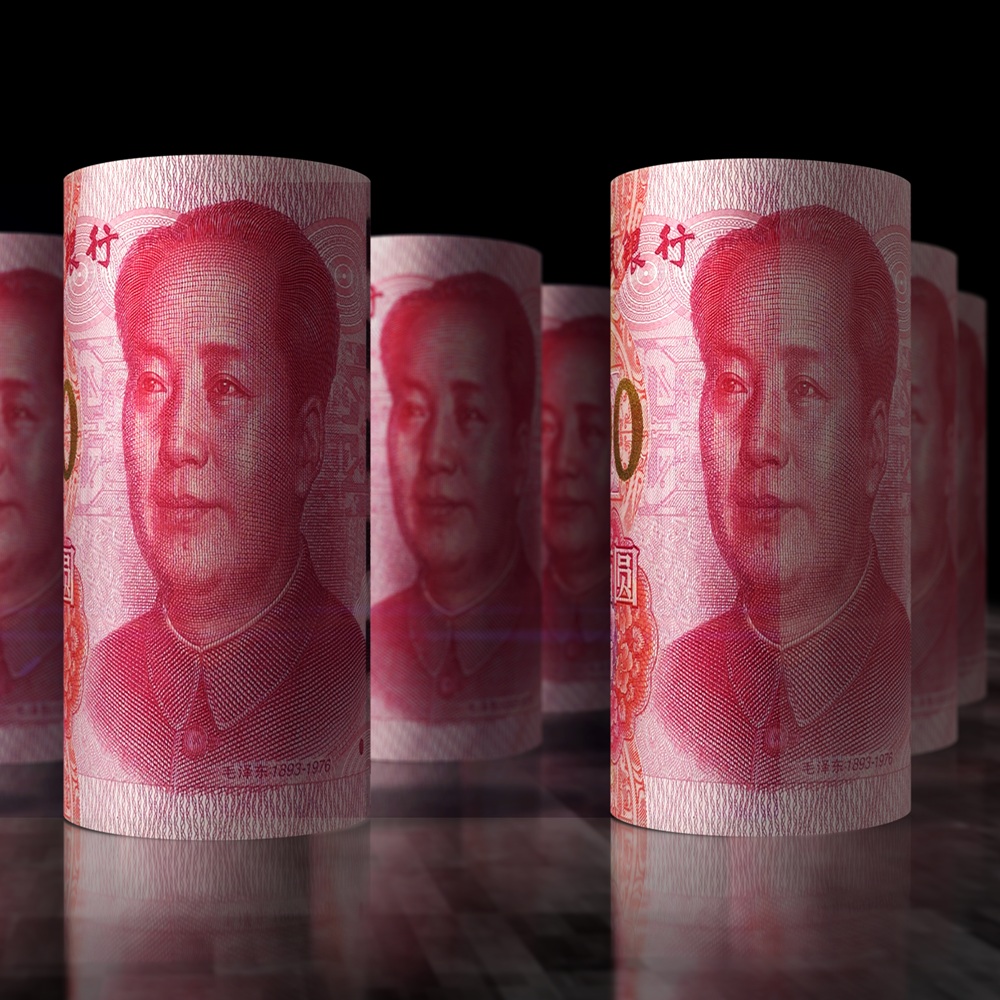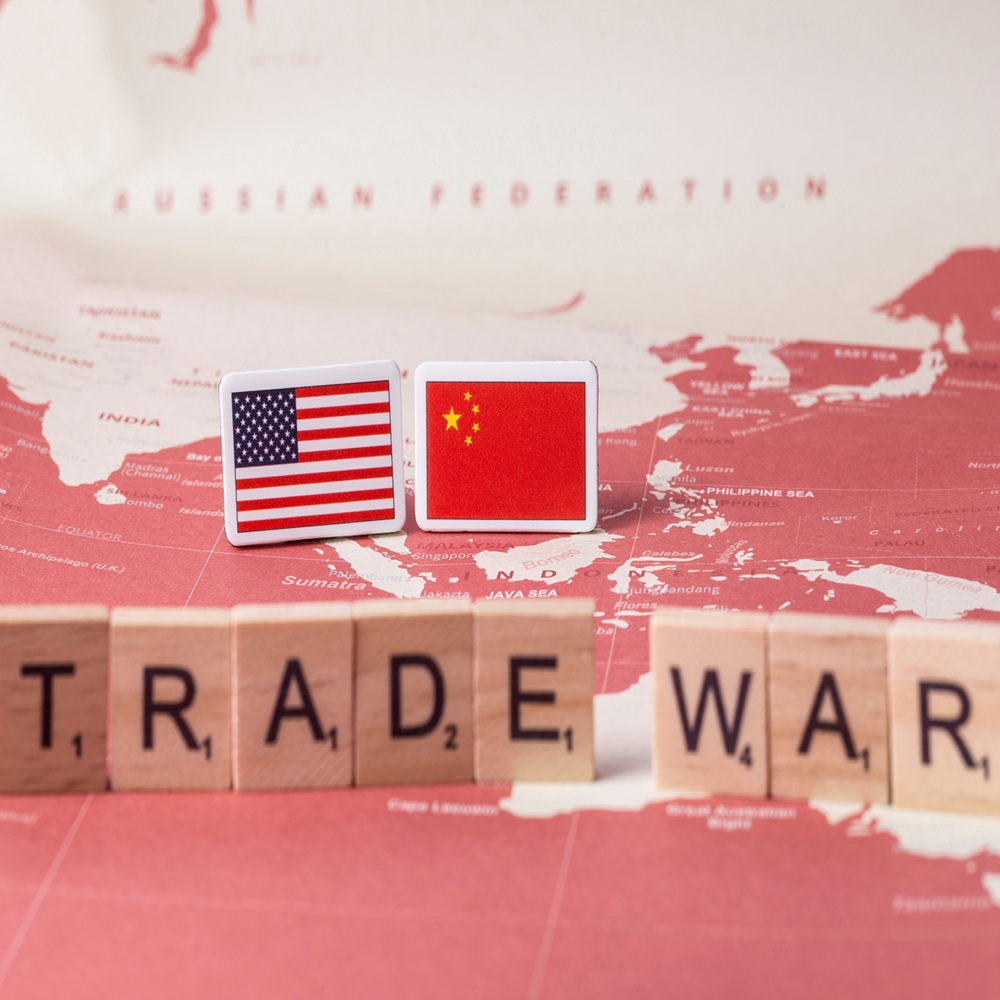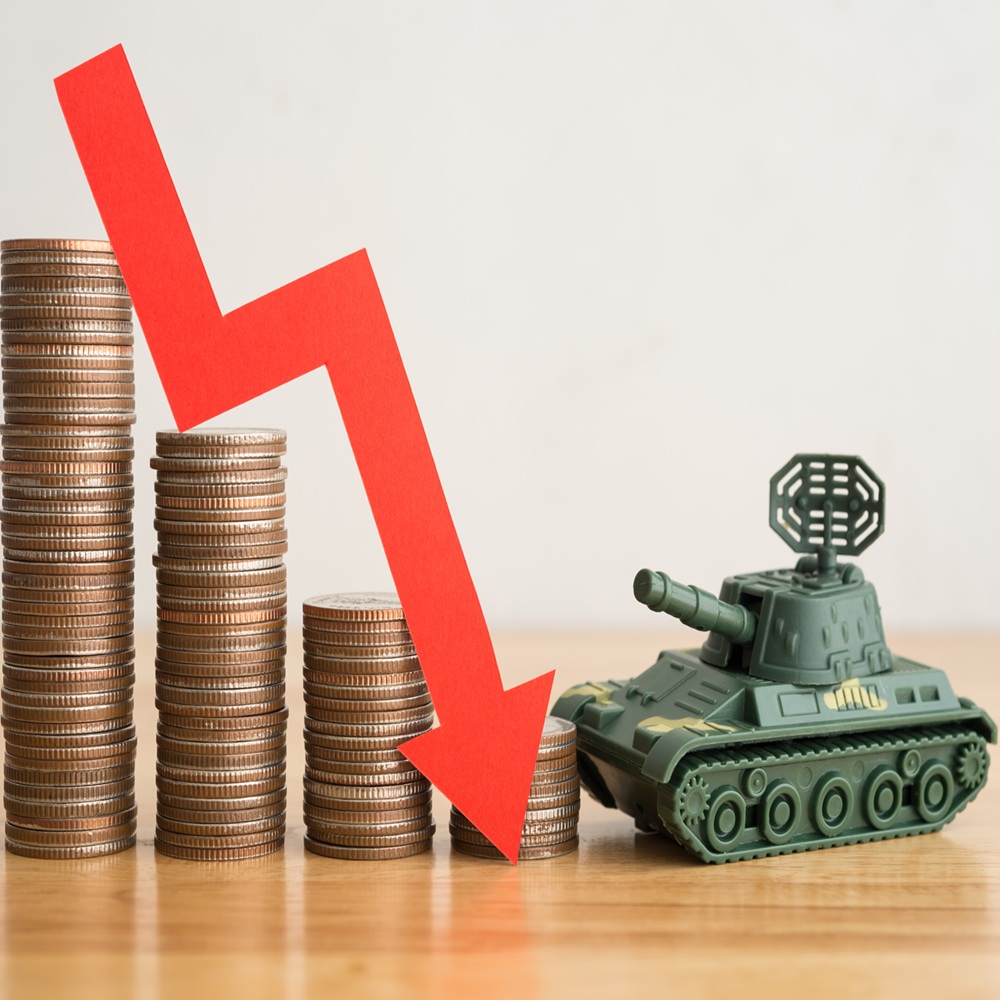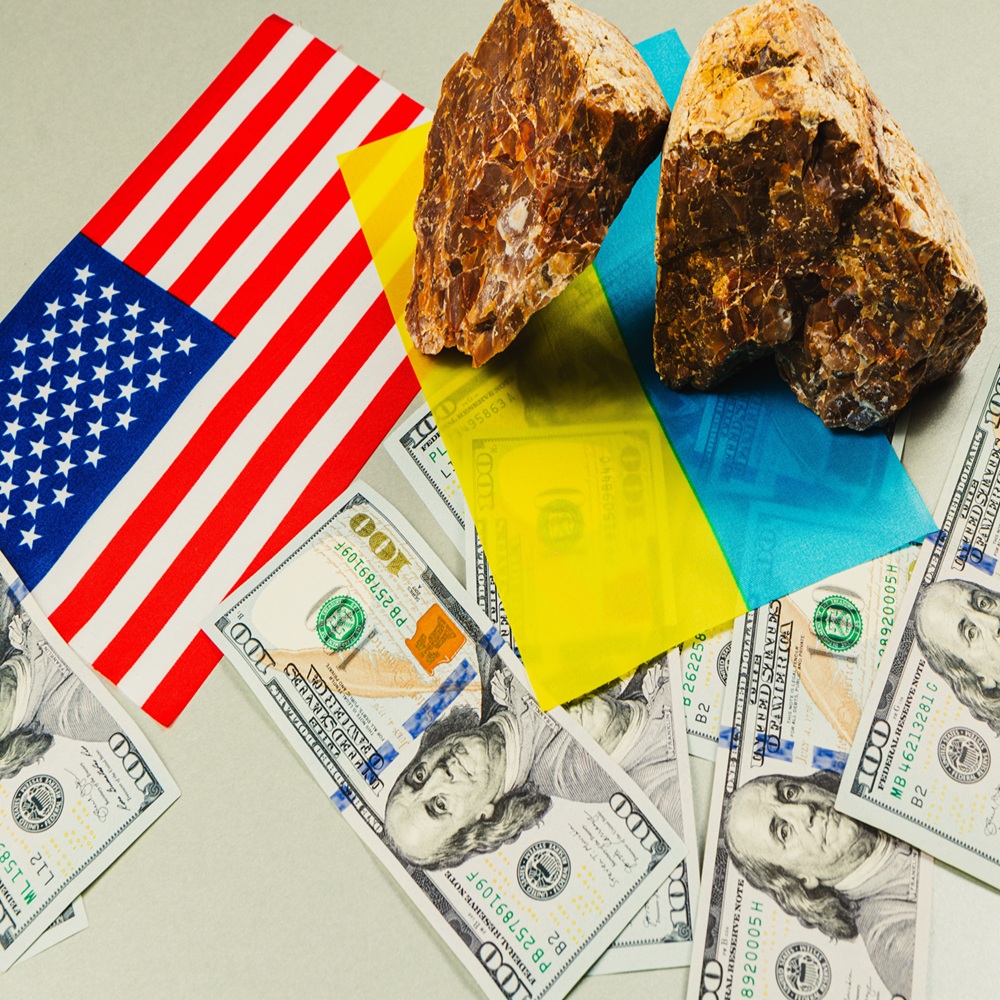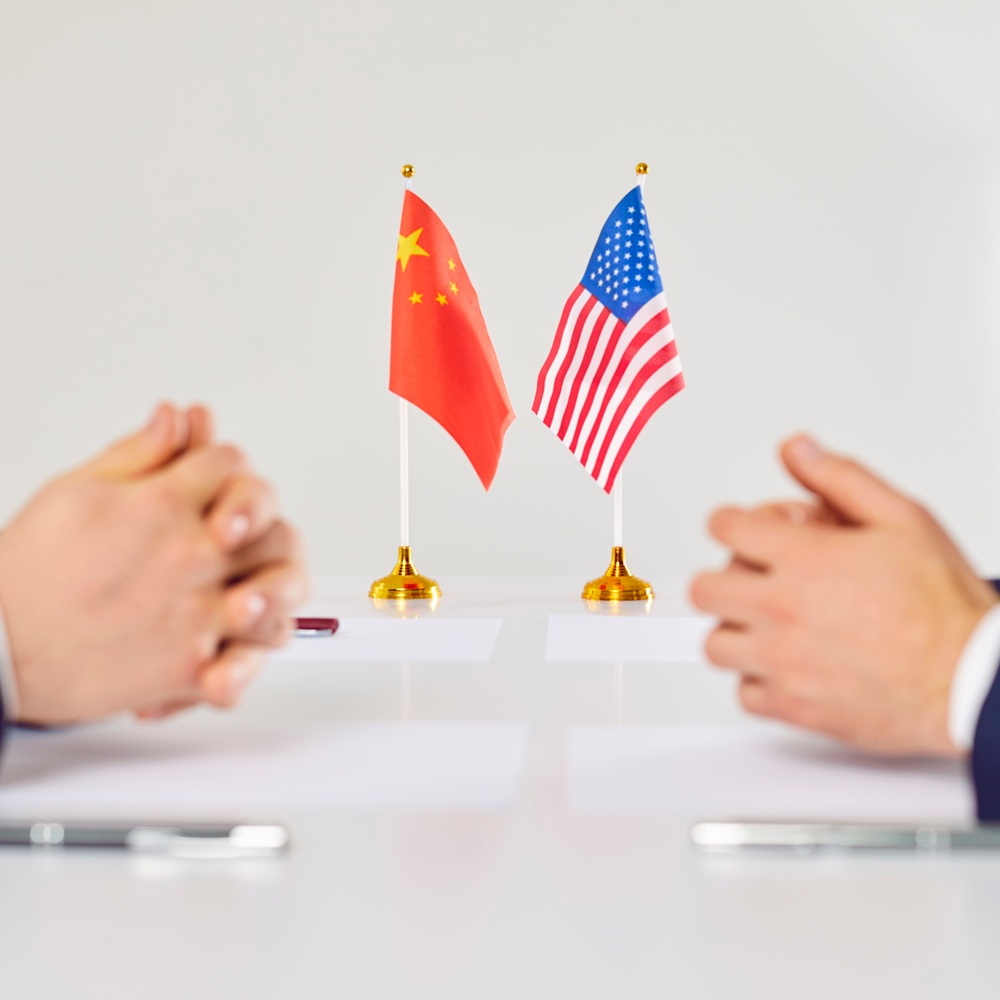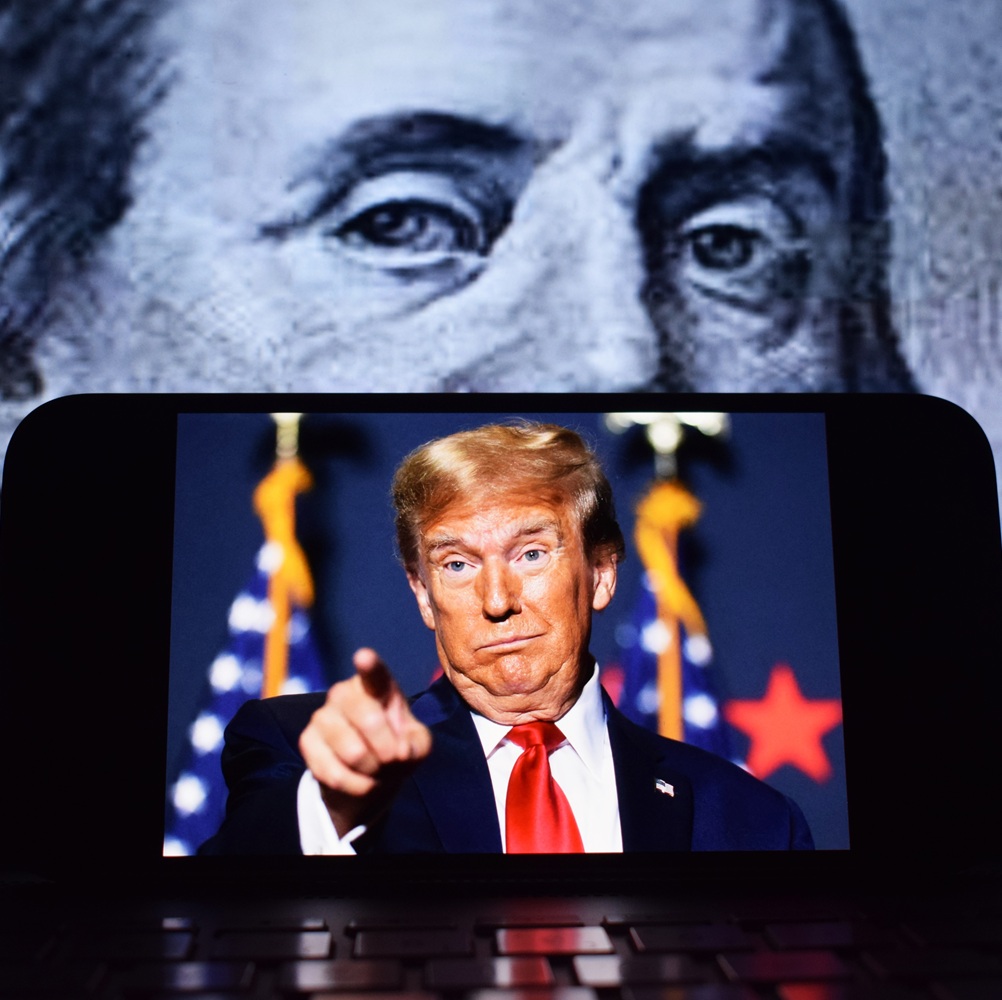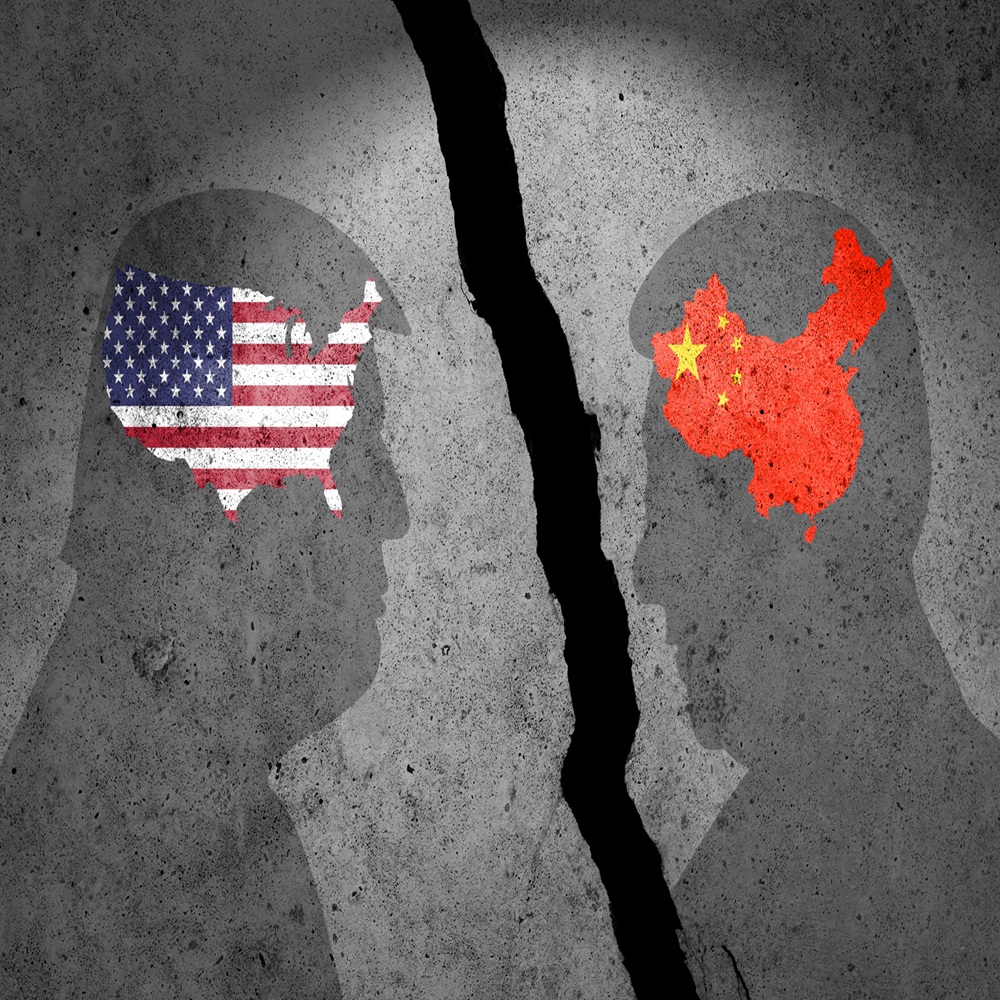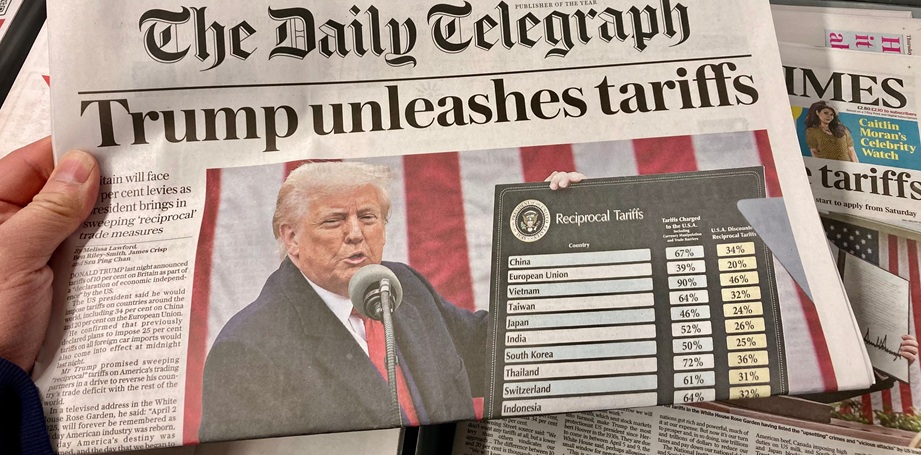
China-Latin America Green Cooperation and the Global Development Initiative
by Cao Ting
한국어로 읽기 Leer en español In Deutsch lesen Gap اقرأ بالعربية Lire en français Читать на русском Abstract The global development initiative proposed by China aims to promote global sustainable development and has received support from many Latin American countries. At present, green cooperation between China and Latin America has achieved positive results in multiple fields such as clean energy, green agriculture, and green transportation. Latin American countries can become important partners for China to promote the Global Development Initiatives. However, in terms of green cooperation, China and Latin America also face some challenges. Both sides must strengthen consensus and achieve coordinated development in various fields. Sustainable Development and the Global Development Initiative The current international situation is turbulent and constantly changing, with a global economy that remains stagnant, while challenges such as geopolitical conflicts, climate change, and the food crisis are becoming increasingly intertwined and exacerbated. In this context, all countries around the world face the important task of promoting sustainable development and maintaining healthy economic and social growth. On September 21, 2021, Chinese President Xi Jinping officially launched the Global Development Initiative at the United Nations, outlining a path toward a new stage of global development that is balanced, coordinated, and inclusive (Ministry of Foreign Affairs of China, 2021). The Global Development Initiative is aligned with the 2030 United Nations Sustainable Development Goals and places climate change and sustainable development as key areas of cooperation, emphasizing the idea of harmonious coexistence between humanity and nature. Its goal is to promote stronger, more sustainable, and healthier global development, and to build a global community for development. The 33 countries of Latin America and the Caribbean are a fundamental part of the Global South and, in general, place great importance on sustainable development, which has allowed them to achieve notable successes in the field of sustainable cooperation. In a context of great power competition and ongoing regional conflicts, the strengthening of sustainable cooperation between China and Latin American countries presents numerous opportunities, creating ample space to jointly advance in sustainable development. The concept of a sustainable economy evolved from the idea of sustainable development, with harmony between humanity and nature at its core and the goal of achieving long-term sustainability. This approach maintains that economic growth is not an unlimited or uncontrolled process but rather must be conditioned by the ecological environment’s capacities and the resource carrying capacity. The concept of a sustainable economy emerged in the late 1980s when British environmental economist David Pearce introduced it in his work “Blueprint for a Green Economy”, published in 1989. However, it was not until the United Nations Conference on Sustainable Development, held in Rio de Janeiro in 2012, that the sustainable economy began to receive greater attention and became a central concept in global development strategies. According to the United Nations Environment Programme (UNEP), a sustainable economy is driven by public and private investments that reduce carbon emissions and pollution, improve energy and resource efficiency, and prevent the loss of biodiversity and ecosystems. A sustainable economy has always promoted development goals that integrate economic, social, and environmental aspects. This respect for the environment and nature is closely linked to traditional Chinese worldviews. Since ancient times, the Chinese have developed ideas about following the laws of nature and protecting the ecological environment. In the classical text “Yi Zhou Shu Ju Pian”, it is recorded: "During the three months of spring, no axes are used in the mountains and forests, to allow plants to grow; during the three months of summer, no nets are placed in rivers and lakes." These ideas have been a fundamental part of the spiritual thought and culture of the Chinese people for over five thousand years, and through them, they have envisioned humanity and nature as an organic and indivisible whole. They represent the basic understanding of the relationship between humans and nature in ancient Chinese agricultural society, where coexistence and mutual promotion between people and the ecological environment reflected a dialectical relationship of unity. These ideas, full of deep wisdom, constitute an essential component of China’s rich cultural tradition. Consensus Base for Green Cooperation In 2021, the Global Development Initiative, aligned with the United Nations Sustainable Development Agenda, established eight key areas of cooperation: poverty reduction, food security, industrialization, connectivity, pandemic response, development financing, climate change, and the digital economy. It also proposed key principles such as “prioritizing development,” “people-centered focus,” “universal inclusion,” “innovation-driven efforts,” “harmony between humanity and nature,” and “action-oriented approaches.” Latin American countries also place great importance on sustainable development and share numerous points of consensus with China on these principles. Currently, several countries in the region, including Peru and Colombia, have joined the “Group of Friends of the Global Development Initiative.” This shared commitment to sustainable development between China and Latin America provides an important foundation for advancing sustainable cooperation. Particularly, China and Latin American countries have broad consensus in the following areas: 1. Prioritizing national development. Both China and many Latin American countries are developing nations and consider the promotion of sustainable development a crucial goal. President Xi Jinping emphasized in the report presented at the 19th National Congress of the Communist Party of China (CPC): “The fundamental fact that our country is still and will long remain in the primary stage of socialism has not changed; our international status as the largest developing country in the world has not changed.” (Xi, 2017) China’s fundamental national situation determines that its main task is to advance along the path of socialism with Chinese characteristics and to focus its efforts on socialist construction. The Global Development Initiative also highlights “prioritizing development” as one of its core pillars. Latin America, for its part, faces the challenge of progressing in development. Although it was one of the regions in the Global South to achieve national independence and begin economic development relatively early, some Latin American countries have experienced stagnation in their economic transformation and have not managed to overcome the so-called “middle-income trap.” Affected by factors such as low global economic growth, fiscal constraints, and limited policy space, Latin America’s economy has shown a weak recovery in recent years, with some countries facing serious inflation and debt problems. Therefore, promoting sustainable development has become a top priority for governments in the region. In 2016, Latin American countries promoted the creation of the Forum of the Countries of Latin America and the Caribbean on Sustainable Development, as a regional mechanism for implementing the 2030 Agenda for Sustainable Development (ECLAC, 2016). By the end of 2023, six successful conferences had been held, and the Latin America and the Caribbean Sustainable Development Report had been published annually to assess the region’s progress in meeting the Sustainable Development Goals (SDGs). 2. Addressing welfare issues as a central task Since the 18th National Congress of the CPC, the Party’s central leadership, led by Xi Jinping, has promoted a people-centered development approach, insisting that everything should be done for the people and depend on the people, always placing them in the highest position. During the centennial celebration of the CPC’s founding, General Secretary Xi emphasized: “To learn from history and forge the future, we must unite and lead the Chinese people in a tireless struggle for a better life.” In contrast, Latin America is one of the most unequal regions in the world. The unequal distribution of wealth, along with gender and racial discrimination, are persistent issues that have been worsened by the COVID-19 pandemic and the global economic slowdown. According to data from the Economic Commission for Latin America and the Caribbean (ECLAC), in 2023 the region’s poverty rate was 29.1%, and extreme poverty was 11.4%, both slightly higher than in 2022 (29% and 11.2%, respectively) (France24, 2023). As a response, many Latin American governments — such as those in Brazil, Mexico, Chile, and Cuba — have incorporated attention to welfare issues and improving their citizens’ quality of life as key pillars in their public policy agendas. 3. Embracing inclusion and shared benefits as a guiding principle Following the end of the Cold War, the world experienced a trend toward multipolarity and continued economic globalization. However, in recent years, there has been a resurgence of protectionism in various forms, accompanied by a rise in unilateralism and hegemonic policies. These “deglobalization” practices not only fail to resolve internal problems, but also disrupt global supply chains, hinder healthy economic development, and harm the interests of countries. In response, developing nations such as China and Latin American countries advocate for multipolar development and oppose unilateralism and power politics. In December 2023, China’s Central Conference on Foreign Affairs Work emphasized the importance of inclusive and mutually beneficial economic globalization. Similarly, Latin America has maintained a diversified foreign policy and has worked toward building a new, fair, and equitable international political and economic order. Amid rising tensions among major powers, most Latin American countries have chosen not to take sides, maintaining a non-aligned policy. Moreover, countries in Latin America are increasingly focused on inclusive development both within their nations and across the region, striving to address internal development imbalances. In 2010, the Andean Development Corporation (predecessor to the Development Bank of Latin America and the Caribbean) released the “Latin America Vision Plan 2040”, which highlighted the need to strengthen economic inclusion in order to achieve truly sustainable growth (CAF, 2010). In January 2023, the Community of Latin American and Caribbean States (CELAC) Summit in Argentina approved the “Buenos Aires Declaration,” which stressed the importance of promoting inclusive development in the region and fostering inclusive dialogue with other regions (CELAC, 2023). 4. Embracing innovation as a key driver Marx pointed out that “science is also part of the productive forces” and that “the development of fixed capital shows the extent to which the general knowledge of society has become a direct productive force.” In 1988, at the National Science Conference, Deng Xiaoping declared, “science and technology are the primary productive forces.” Since the 18th CPC Congress, China has firmly pursued innovation-led development. It launched the National Innovation-Driven Development Strategy, issued the Medium- to Long-Term Science and Technology Development Plan (2021–2035), and rolled out the Technological Innovation Blueprint under the 14th Five-Year Plan. Thanks to this framework, China has made significant progress in accelerating emerging technologies such as artificial intelligence, big data, quantum communication, and blockchain. Latin American countries are also intensifying their focus on technological innovation. In 2023, CELAC’s Buenos Aires Declaration underscored the importance of innovation for enhancing regional competitiveness and job quality, while encouraging scientific exchanges among nations and subregional organizations. Furthermore, the President of Brazil, Luiz Inácio Lula da Silva, committed to increasing investment in technological development. To that end, he announced at the 28th Conference of the Parties to the United Nations Framework Convention on Climate Change an investment of approximately 21 billion reais (around 4.28 billion U.S. dollars) in sustainable economy, innovative technologies, and low-carbon economy. In the 2023 Global Innovation Index, Brazil ranked 49th out of 132 countries, improving by five positions compared to the previous year. The President of Chile, Gabriel Boric, pledged to increase public funding for research and to finance the work of universities and research institutions. In 2019, the Colombian government established the “International Mission of Wise People,” a body composed of 46 national and international academic experts to promote production diversification and automation, with the goal of doubling the share of manufacturing and agriculture in the country’s Gross Domestic Product (GDP) by 2030. The current president of Colombia, Gustavo Petro, has committed to transforming the country into a “knowledge society” and to continuing this initiative. 5. Making harmony between humans and nature a central goal Developing countries — including China and Latin American nations — prioritize climate issues and actively contribute to global climate governance. Since ancient China during the Spring and Autumn and Warring States periods, philosophical schools such as Confucianism and Taoism had already proposed concepts about the “unity between Heaven and humankind.” Similarly, Indigenous cultures in Latin America also share related cultural traditions. The Quechua peoples of Peru, Ecuador, and Bolivia promote the concept of “’Buen Vivir’” (“Good Living”), which emphasizes harmony between human society and nature. The Aymara of Peru and Bolivia, the Guaraní of Brazil, Argentina, Paraguay, and Bolivia, the Shuar of Ecuador, and the Mapuche of Chile all have similar philosophical expressions. So far in the 21st century, China and Latin American countries have intensified their focus on sustainable development. In August 2005, during a visit to Anji in China’s Zhejiang Province, Xi Jinping, then Secretary of the Communist Party of China in Zhejiang, put forward the principle that “lucid waters and lush mountains are as valuable as mountains of gold and silver,” highlighting the idea that economic growth should not be achieved at the expense of the environment. China’s Global Development Initiative includes climate change and sustainable development as key cooperation areas, aiming for stronger, healthier global progress. Simultaneously, Latin American countries value sustainability highly. Ten nations in the region have officially submitted carbon-neutrality timelines and developed emissions-reduction plans. Several governments have taken significant measures to accelerate energy transition, restore ecosystems, and enhance international cooperation. Notably, Brazil, Chile, Costa Rica, and Uruguay have made substantial strides in renewable energy: in Q1 2023, more than 90 % of Brazil’s energy came from renewables — the highest level since 2011. Progress of Green Cooperation between China and Latin America 1. High-level design for sustainable cooperation between China and Latin American countries has been continuously strengthenedAs comprehensive cooperation between China and Latin America progresses, sustainable collaboration has also become integrated into the strategic high-level planning. At the third Ministerial Meeting of the China-CELAC Forum in 2021, the "Joint Action Plan for Cooperation in Key Areas between China and CELAC Member States (2022–2024)" was adopted. This plan emphasizes the continuation of cooperation in areas such as renewable energy, new energy, civil nuclear energy, energy technology equipment, electric vehicles and their components, as well as energy-related geological and mineral resources. It also outlines the expansion of cooperation in emerging industries related to clean energy resources, support for technology transfer between companies, and the respect and protection of the natural environment. Joint declarations between China and countries such as Brazil, Mexico, and Argentina on establishing and deepening comprehensive strategic partnerships mention strengthening cooperation in areas such as climate change and clean energy. During the sixth meeting of the Sino-Brazilian High-Level Commission for Coordination and Cooperation in May 2022, the Chinese Ministry of Commerce and the Brazilian Ministry of Economy agreed to sign a Memorandum of Understanding on Promoting Investment Cooperation for Sustainable Development, aimed at promoting investment in clean and low-carbon technologies in both countries. In April 2023, during Brazilian President Luiz Inácio Lula da Silva's visit to China, the two countries issued the “China-Brazil Joint Declaration on Combating Climate Change” and signed several cooperation agreements related to the sustainable economy. For example, Article 3 mentions “expanding cooperation in new fields such as environmental protection, combating climate change, the low-carbon economy, and the digital economy,” while Article 10 notes the aim to “strengthen cooperation on environmental protection, climate change, and biodiversity loss, promote sustainable development, and accelerate the transition to a low-carbon economy.” In the same month, the “China-Brazil Joint Declaration on Combating Climate Change,” the “Memorandum of Understanding on Research and Innovation Cooperation between the Ministries of Science and Technology of China and Brazil,” and the “Memorandum of Understanding on Promoting Investment and Industrial Cooperation between China and Brazil” identified key areas of future cooperation, including sustainable infrastructure, the development of sustainable industries, renewable energy, electric vehicles, sustainable technological innovation, and green financing. 2. Clean energy cooperation has deepened The development and use of clean energy are essential means for achieving green development. In recent years, clean energy cooperation between China and Latin America has shown the following main characteristics. The scope of clean energy cooperation is becoming increasingly broad. Currently, cooperation between China and Latin America in the fields of clean energy — such as hydropower, solar energy, wind power, nuclear energy, biomass energy, and lithium batteries — has reached a certain level of breadth and depth. At the same time, both sides have also initiated cooperation efforts in emerging areas such as green hydrogen and smart energy storage. China is constantly diversifying its target countries and modes of investment in clean energy in Latin America. In 2015, China began increasing its investment in the renewable energy sector in the region. Between 2005 and 2020, China’s main investment targets in renewable energy in Latin America included countries such as Brazil, Mexico, Peru, Argentina, and Bolivia. Investments in projects, mergers and acquisitions, and greenfield investments have gone hand in hand. 3. Green cooperation in the transportation sector has yielded outstanding results. Chinese companies continue to cooperate with Latin American countries in the field of public transportation infrastructure and electric vehicles, promoting the low-carbon development of the transport sector in Latin America. First, cooperation in public transportation infrastructure is advancing. In recent years, Chinese companies have actively participated in the construction of public infrastructure such as railways, roads, and bridges in Latin American countries, aiming to promote interconnectivity and green travel across the region. Bogotá Metro Line 1, in the capital of Colombia, currently under construction with Chinese investment, is to date the largest public-private partnership (PPP) project in individual transportation infrastructure in Latin America. Second, trade in electric vehicles is developing rapidly. China’s electric vehicle industry has extensive experience in large-scale production and a relatively complete industrial supply chain, making it a new growth area in China–Latin America trade. Electric buses and cars from independent Chinese brands such as BYD, JAC, and Dongfeng are favored in Latin America due to their good quality and low price. Third, cooperation in battery and tram production is also improving. China and Latin America have also begun bold attempts in green capacity cooperation within the manufacturing sector. Currently, BYD is carrying out a range of production activities in Brazil, including the assembly of bus chassis and the production of photovoltaic modules and batteries. 4. Green agricultural cooperation is on the rise. Latin America has vast and fertile land, and agricultural cooperation is an important component of China–Latin America trade. In recent years, Chinese companies have paid increasing attention to using advanced technologies to strengthen environmental protection and actively promote the green transformation of agricultural cooperation. COFCO (‘China National Cereal, Oil & Foodstuff Corporation’) and its Brazilian partners conducted risk assessments of more than 1,700 soybean suppliers in the Amazon and Cerrado ecological zones, and mapped over 1.1 million hectares of soybean fields using remote sensing satellites, which has raised farmers' awareness of sustainable development. By the end of 2021, COFCO had achieved 100% traceability for all direct soybean purchases in Matopiba, a major soybean-producing region in Brazil. At the same time, China and several Latin American countries are promoting cooperation in green agricultural research and development. The Chinese Academy of Tropical Agricultural Sciences has established cooperative relationships with nine Latin American countries, including Colombia, Panama, Ecuador, and Costa Rica. It has achieved progress in exchange and cooperation in areas such as the innovative use and protection of germplasm resources, efficient transformation and comprehensive utilization of biomass energy, green pest and disease prevention and control technologies, and efficient cultivation techniques. 5. Cooperation on green financing plays an important bridging role. The Global Development and South-South Cooperation Fund and the China-United Nations Peace and Development Fund are key financial platforms through which China supports project cooperation under the Global Development Initiative. In addition to the above-mentioned platforms, current green financial instruments between China and Latin America include the Asian Infrastructure Investment Bank, the China–Latin America Cooperation Fund, the China–Latin America Development Finance Cooperation Mechanism, and subsidies provided by China’s Ministry of Commerce and Ministry of Foreign Affairs. Currently, all three financing projects of the Asian Infrastructure Investment Bank in Brazil are related to the green economy. Challenges facing Sino–Latin American green cooperation Although green cooperation between China and Latin America has gradually achieved results and presents many development opportunities, the risks and challenges of cooperation should not be ignored. Most Latin Americans expect that foreign cooperation will promote social well-being, eliminate poverty, and reduce inequality in their countries. They place great importance on the social benefits of projects and pay close attention to the environmental impact of projects on local ecosystems. Currently, the process of extracting lithium from brine places high demands on water resources and carries the risk of air and water pollution. As a result, lithium mining has also faced opposition from Indigenous communities in some Latin American countries. In 2023, Indigenous peoples from Argentina’s Jujuy Province staged several protests against the exploitation of a lithium mine (Reventós, 2023). To reduce pollution in lithium extraction, further scientific and technological research is needed. The integration of Chinese companies into Latin America also faces many obstacles. The official languages of most Latin American countries are Spanish and Portuguese, which are deeply influenced by European and U.S. cultures. In addition to geographical distance, there is limited mutual understanding between the peoples of China and Latin America, and transportation and logistics costs are high. Most Chinese companies lack personnel fluent in Spanish or Portuguese and familiar with local laws and regulations. Currently, the U.S. government continues to view China as a strategic competitor. Latin America has also become a battleground for strategic competition between China and the United States. The U.S. has increasingly turned its attention to China’s cooperation with Latin American countries. In 2019, the U.S. House Committee on Foreign Affairs published an article stating that “China’s green investment in Latin America cannot offset local environmental damage” (Cote-Muñoz, 2019). In general, green cooperation between China and Latin America will face a more complex environment in the future. Final considerations In recent years, China has put forward the Global Development Initiative to promote international cooperation for sustainable development. Latin America, one of the regions with the most developing countries in the world, actively promotes the implementation of the Sustainable Development Agenda and has a solid green economic foundation. In this sense, the region can be an important partner for China in achieving the goals of the 2030 Agenda and building a shared future for humanity. China must continue to build consensus on development priorities with Latin American countries, plan key areas of cooperation according to their conditions and needs, promote connections between governments, businesses, universities, and media in China and Latin America, and jointly advance the green cooperation to a new level. China and Latin America have achieved multidisciplinary coverage in green cooperation. It is necessary to further improve the quality of cooperation in the future and achieve coordinated development across various sectors. For example, in the long term, the development of renewable energy will require greater energy storage capacity and wider electric grid coverage. Additionally, Chinese companies need to integrate more into local societies and generate greater social benefits while ensuring economic returns. They can strengthen cooperation with Latin American companies in order to quickly become familiar with local laws, regulations, and market conditions. Furthermore, more research — including environmental assessments and social consultations — should be conducted before launching projects. References CAF (2010). "Corporación Andina de Fomento, Visión para América Latina 2040 Hacia una sociedad más incluyente y próspera". https://scioteca.caf.com/bitstream/handle/123456789/496/latinamerica_2040_summary_esp.pdf?sequence=1&isAllowed=yCELAC (2023). "Declaración de Buenos Aires". https://www.cancilleria.gob.ar/userfiles/prensa/declaracion_ de_buenos_aires_-_version_final.pdf CEPAL (2016). "El Foro de los Países de América Latina y el Caribe sobre el Desarrollo Sostenible y el Seguimiento Regional de la Agenda 2030". https://www.cepal.org/es/temas/agenda-2030-desarrollo-sostenible/ foro-paises-america-latina-caribe-desarrollo-sostenible-seguimiento-regional-la-agenda-2030Cote-Muñoz, N. (2019). "China's Green Investments Won't Undo Its Environmental Damage to Latin America". Council on Foreign Relations. https://www.cfr.org/blog/chinas-green-investments-wont-undo-its-environmental-damage-latin-americaFrance24 (2023). "Tasa de pobreza se mantiene en 29 % en América Latina en 2023". https://www.france24.com/es/minuto-a-minuto/20231125-tasa-de-pobreza-se-mantiene-en-29-en-am%C3%A9rica-latina-en-2023-dice-cepalMinistry of Foreign Affairs of China (2021). "Global Development Initiative-Building on 2030 SDGs for Stronger, Greener and Healthier Global Development". https://www.mfa.gov.cn/eng/zy/jj/GDI_140002/wj/202406/ P020240606606193448267.pdfReventós, B. y N. Fabre (2023). "Los grupos indígenas en Argentina que se oponen a la extracción del litio". BBC. https://www.bbc.com/mundo/articles/cevzgv0elp9o Cuadernos de Nuestra América. No. 014 | Nueva Época 2025, Centro de Investigaciones de Política Internacional (CIPI). Under CC BY-NC 4.0









